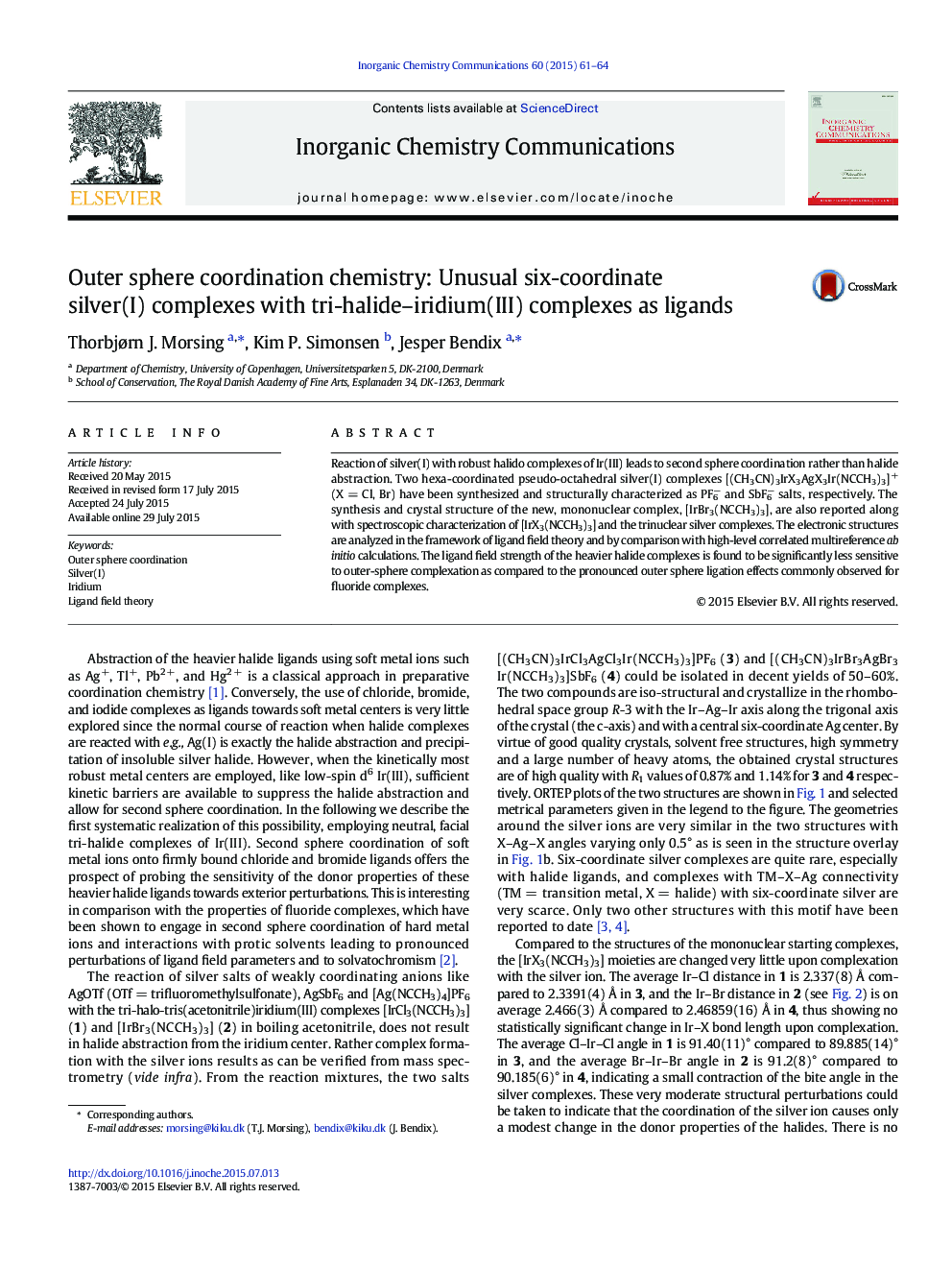| Article ID | Journal | Published Year | Pages | File Type |
|---|---|---|---|---|
| 1303346 | Inorganic Chemistry Communications | 2015 | 4 Pages |
•Robust Ir(III) allows for structural characterization of second-sphere complexation.•Unusual six-coordination of silver is accessible through chelation by metalloligands.•Less sensitivity of the donor properties of chloride and bromide as compared to fluoride towards external perturbations
Reaction of silver(I) with robust halido complexes of Ir(III) leads to second sphere coordination rather than halide abstraction. Two hexa-coordinated pseudo-octahedral silver(I) complexes [(CH3CN)3IrX3AgX3Ir(NCCH3)3]+ (X = Cl, Br) have been synthesized and structurally characterized as PF6− and SbF6− salts, respectively. The synthesis and crystal structure of the new, mononuclear complex, [IrBr3(NCCH3)3], are also reported along with spectroscopic characterization of [IrX3(NCCH3)3] and the trinuclear silver complexes. The electronic structures are analyzed in the framework of ligand field theory and by comparison with high-level correlated multireference ab initio calculations. The ligand field strength of the heavier halide complexes is found to be significantly less sensitive to outer-sphere complexation as compared to the pronounced outer sphere ligation effects commonly observed for fluoride complexes.
Graphical abstractSilver(I) is complexed by tri-halide complexes of kinetically robust iridium(III).Figure optionsDownload full-size imageDownload as PowerPoint slide
